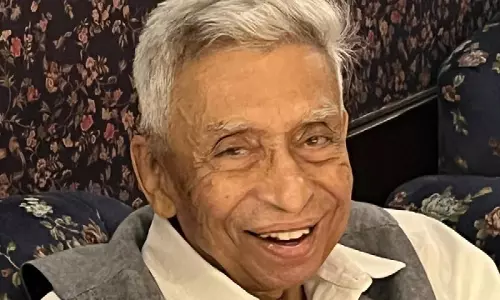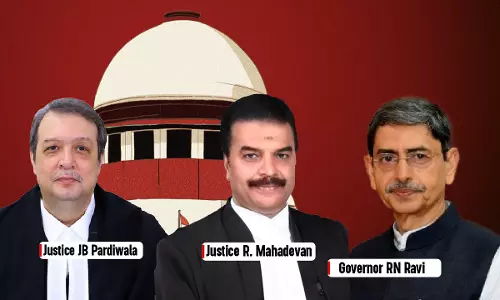Judicial Review Of Arbitral Awards: Public Policy And Its Evolution Exploitation

A fundamental principle of arbitration is minimum judicial intervention, and this minimization is accomplished through non-substantive review of arbitral awards by national courts. The purpose behind such principle is to ensure the enforcement of the arbitral award and to uphold the sanctity of party autonomy.India, being a party to the UNCITRAL and the New York Convention, accepts...
A fundamental principle of arbitration is minimum judicial intervention, and this minimization is accomplished through non-substantive review of arbitral awards by national courts. The purpose behind such principle is to ensure the enforcement of the arbitral award and to uphold the sanctity of party autonomy.
India, being a party to the UNCITRAL and the New York Convention, accepts in-principle the aforementioned-virtues of arbitration; however, for quite some time, the actions of its national courts erupted a long-standing debate which was toned down considerably with the pronouncement of BALCO judgment and the enactment of the 2015 amendment.
The scope of judicial review of awards in India has been unduly exploited through a series of judicial transgressions. One of the most notorious mentions of such transgression is the unwarranted exploitation of the “public policy” ground that resulted in unceremonious decisions such as Saw Pipes and Western Geco.
In this paper, the author endeavours to explore and analyse the developmental history of “public policy”, employed as one of the grounds of judicial review of awards, and the implications posed on the Indian arbitration scenario.
INTRODUCTION
Arbitration is a consensual dispute resolution mechanism agreed upon by the parties to an agreement. Such dispute resolution mechanism is un-entangled from the typical Courtroom litigation, which is time-consuming and wasteful in terms of resources and offers a convenient and faster way of settling disputes with the help of a mutually decided third party.
Keeping in mind the virtues of arbitration, minimum judicial intervention is important since such restraint respects party autonomy and the sanctity of an arbitral award. Naturally, for arbitration to become an effective alternative dispute resolution mechanism, its functioning mechanism must be segregated from that of Courts, and the Courts must not unnecessarily interfere in the decision-making process of arbitration.
The Model Law[1] and the New York Convention[2] have been quite expressive on the question of judicial intervention; however, they have allowed the party-States to tone down or up their provisions but without disregarding the principles of arbitration. For instance, Model Law stipulates in clear terms that the judicial intervention is allowed only when the law allows[3], and the same has been incorporated in explicit terms in the Arbitration and Conciliation Act 1996(hereinafter “the Act 1996”); similarly, the New York Convention encourages party-States to ensure recognition and enforcement of foreign arbitral award as much as possible[4], and this is apparent in Article V, which limits the grounds for refusal of the enforcement of a foreign arbitral award.
The provisions contained in the aforesaid conventions limit the judicial intervention to the extent of procedural matters and discourage the review of an award on the questions of facts and law. The same is the underlying essence of the Act 1996, which adopts the provisions on judicial intervention from the Model Law and the New York Convention, particularly in the form of Sections 34 and 48, dealing with setting aside of domestic awards and recognition and enforcement of a foreign award, respectively.
Unfortunately, lately, there is an emerging trend, and, in certain jurisdictions, a well-established trend which reflects the increasing judicial oversight on the awards rendered. The implication of the preceding statement is that the Courts, such as in the United States and India, have formulated standards, which have widened the scope of judicial inquiry that is merit-based such as manifest disregard of law and patent illegality. In the Indian context, the Courts have expanded its judicial review under “public policy”, a vague ground to begin with, and added another flavour to it—patent illegality—which is even vaguer.
The undue expansion of judicial review in India only drew scathing criticism from across the globe, which was only subdued considerably with the 2015 amendment that dramatically overhauled a more than decade-long arbitration landscape created by the Indian courts to work towards the making of India as an arbitration-friendly country.
In this paper, the author has attempted to track down the developments made in respect of judicial review in the context of ‘public policy’, and how the same was rectified significantly with the 2015 amendment.
JUDICIAL REVIEW OF ARBITRAL AWARD IN INDIA
PRINCIPLE OF MINIMUM JUDICIAL INTERVENTION IN ARBITRATION
Section 5 of the Act 1996 explicitly states:
Notwithstanding anything contained in any other law for the time being in force, in amatter governed by this Part, no judicial authority shall intervene except where so provided in this Part.[5]
This statement is essentially the “recognition of the policy of party autonomy underlying the Act and the desire to limit and define the court’s role in arbitration so as to give effect to that policy.” [6] The statement is indicative of one major aspect: the court should intervene only when there is a clear provision provided under Part I of the Act 1996 allowing the intervention of the court, and the court should exercise due caution while intervening in those circumstances allowed in the Act. Thus, the power of judicial review is substantially limited, and the court, in furtherance of the principles of arbitration, should not tread beyond the permissible statutory limits and review the award.
The House of Lords in Lesotho Highlands v ImpreglioSpA[7] has exposited the essence of a similarly drafted provision in the English Law, stating:
“A central and important purpose of the (English) 1996 Act was to emphasise the importance of party autonomy and to restrict the role of courts in the arbitral process. In particular the Act was intended to ensure that the powers of the court should be limited to assisting the arbitral process and should not usurp or interfere with it.”[8]
The whole point of arbitration is that “the merits of the dispute will not be reviewed in the courts, wherever they be located […] the courts should review arbitrations for procedural irregularity but resist inquiry into the substantive merits of awards.”[9]
The courts cannot assume an “inherent” jurisdiction, and must confine the exercise of its powers within the limitations prescribed by the statute—this should have been the guiding understanding of the Indian courts; however, the same was not the case.
“PUBLIC POLICY”: AN OPEN-ENDED STANDARD
It is the very ambiguous, subjectively susceptible nature of the phrase “public policy” which empowered the courts to expand their reach into the contents of an arbitral award. Public Policy can never be sufficiently defined, and, as Burrough rightly remarked in the case Richardson v Mellish[10]: “It is never argued at all, but when other points fail”.[11]
In order to take a defence of public policy, “there is some element of illegality or that the enforcement of the award would be ‘clearly injurious to the public good or, possibly, that enforcement would be wholly offensive to the ordinary reasonable and fully informed member of the public on whose behalf the powers of the state are exercised.”[12]
The near-unanimous understanding is that public policy should be construed narrowly, particularly for foreign arbitral awards, and that “the enforcement of foreign arbitral awards may be denied on this basis only where enforcement would violate the forum State’s most basic notions of morality and justice.”[13] Erroneous legal reasoning or misapplication of law is generally not a violation of public policy within the meaning of Article V of the New York Convention[14].
However simple and succinct it may sound, the interpretation of public policy has not been a cake walk, since a number of courts across various jurisdictions have applied the ground and vetted the award on merits—this destroys the purpose of having arbitration in the first place.
THE EVOLUTION OF PUBLIC POLICY UNDER INDIAN JURISDICTION: A TESTAMENT OF JUDICIAL OVER-REACH
In order to understand how judicial review is susceptible to expansion or curtailment, it is important to start from the scratch—this is particularly true in the Indian context. The Indian judiciary has been rebuked for its anti-arbitration take on the judicial review of arbitral awards, and for years, India was debunked as a really bad choice for arbitration. It was only until the BALCO[15]judgment and the subsequent 2015 amendment that the international arbitration community noticed a ray of hope.
SECTIONS 34 AND 48 OF THE ARBITRATION ACT 1996In order to fully understand the developmental history of judicial review in reference to public policy, it is necessary to assess the statutory provisions contained in Sections 34 and 48 that are the reproductions of Article 34 of the Model Law and Article V of the New York Convention, respectively.
The aforesaid statutory provisions are exhaustive in nature, meaning thereby that the Courts must not go beyond the given grounds to review the arbitral award and the Courts must take caution while applying them and ensure their applicability to matters of serious procedural irregularity and refrain from merit-based reviews.
It is to be noted that both provisions have identical grounds, including that of ‘public policy’, and it is this identical characteristic that was taken into account to a notorious extent to expand the scope of judicial review.
Section 34 (2) (b) states that the Court can set aside an award if it finds that “the arbitral award is in conflict with the public policy of India.”[16] Similarly, Section 48 (2) (b) provide that the enforcement of an arbitral award can be refused if “the enforcement of the award would be contrary to the public policy of India.”[17]
An important distinction is to be highlight, and it is thus the distinction that created major confusion in the determination of public policy: Section 34 falls under Part I, and Section 48 belongs to Part II. Part I applies to domestic arbitral awards whereas Part II applies to foreign arbitral award, and this brings a question as to whether the rigor of public policy in the review of foreign arbitral award is as much as that of domestic arbitral award.
The Court relied on Section 13 (f) of the Code of Civil Procedure 1908 which provides that “a foreign judgment may be refused recognition and enforcement in India if it sustains a claim founded on a breach of any law in force in India.[18] The repercussions of such an approach are self-evident as any foreign arbitral award that is not in conformance with the provisions of any of the laws in India could be struck down by adopting this view.[19]Ultimately, it would lead to non-enforcement of a substantial number of foreign arbitral awards.
Before the 2015 amendment was enforced, there was a string of judicial pronouncements which gave their own understanding on the extent of public policy, and this eventually resulted in an abstract test “patent illegality” that still remains.
THE CONTRIBUTION OF RENUSAGAR CASE
In the case of Renusagar Power Co. Ltd. V. General Electric Company,[20] the Supreme Court gave a much deserving attempt to elucidate upon the boundaries of ‘public policy’ by toeing a reasonable line of reasoning which emphasized upon the need to narrowly construe the term, and not to fabricate additional grounds beyond what are already provided in the Act.
The Court, while enumerating the constituents of public policy, stated quite categorically that in order to constitute a violation of public policy, there has to be more than mere violation of the law. This was an imperative move to tighten the walls of public policy and observe the general principles of arbitration which encourage enforcement of an award as much as possible unless there is an egregious procedural irregularity, the issue of arbitrability or violation of public policy.
The Court enumerated three major constituents of public policy, and two of those constituents have been duly recognized in the 2015 amendment:
- The fundamental policy of Indian law; or
- The interests of India; or
- Justice or morality.
While setting up a high threshold of public policy, the Supreme Court stressed on the need to liberally enforce foreign awards. It is articulated that “since the Act is calculated and designed to sub serve the cause of facilitating international trade and promotion thereof by providing for speedy settlement of disputes arising in such trade through arbitration, any expression or phrase occurring therein should receive, consisting with its literal and grammatical sense, a liberal construction.”[21]
In the Case of Saw Pipes
If there has to be a dishonourable mention, it has to the case of Oil & Natural Gas Corp. Ltd. V. SAW Pipes Ltd.[22].The case is an excellent example of how the principles of arbitration can be sabotaged, and the judicial review of arbitral awards can be extraordinarily expanded.
In this case, the Court was called upon to decide the ambit and scope of the Court ’s jurisdiction in those cases where the arbitral award is challenged under Section 34 of the Act 1996. The Court reasoned that “public policy” in Section 34 requires a broader interpretation, and this is explicit in the following paragraph:
“Therefore, in our view, the phrase 'Public Policy of India' used in Section 34 in context is required to be given a wider meaning. It can be stated that the concept of public policy connotes some matter which concerns public good and the public interest. What is for public good or in public interest or what would be injurious or harmful to the public good or public interest has varied from time to time. However, the award which is, on the face of it, patently in violation of statutory provisions cannot be said to be in public interest. Such award/judgment/decision is likely to adversely affect the administration of justice. Hence, in our view in addition to narrower meaning given to the term 'public policy' in Renusagar's case (supra), it is required to be held that the award could be set aside if it is patently illegal.”[23]
In categorical terms, the Court enabled a merit-based assessment of the award, stating that “illegality must go to the root of the matter and if the illegality is of trivial nature it cannot be held that award is against the public policy.”[24] Naturally, the verdict was unwelcomed since “it permits the national courts of India to review the legal basis of the award under the guise of public policy.”[25]
This new standard of “patent illegality” was essentially an error of law, and this led to the dramatic lowering of the threshold of public policy. Clearly, the Court went beyond the statutory conditions contained in Section 34 and formulated its own device of judicial control on arbitral awards.
The case was delivered in respect of a domestic arbitral award, but the Court did not particularly exclude the application of its ruling to foreign awards. There remained an uncertainty, which was only compounded in the infamous Bhatia International v. Bulk Trading SA & Another[26]which turned the Indian arbitration landscape upside-down by extending the application of Part I of the Act 1996 to foreign awards provided the same is not explicitly or implicitly excluded by the parties.
After Saw Pipes and Until Balco
The ruling in Saw Pipes opened the floodgates to expanded judicial review of the arbitral awards, which were only sealed in BALCO. The fact that the Saw Pipes had received an adverse reception was acknowledged, especially in the case of Centro de Minerals & Metal Inc. v Hindustan Copper Ltd.[27], the courts, nevertheless, continued applying the ruling in a number of cases.
In Western Geco[28] case, the Supreme Court reaffirmed the Saw Pipes ruling, and said that public policy includes all such fundamental principles as providing a basis for administration of justice and enforcement of law in this country.”[29] Going further, the court explored the boundaries of “fundamental policies of India” and expressed that the same cover an assessment of whether the tribunal made application of a “judicial approach” involving a non-arbitrary exercise of decision; acted in consonance with the principles of natural justice, which includes application of mind to the facts; and avoided an irrational or perverse decision.
In the Venture Global[30] case, the Court made “explicit what was otherwise implicit by holding that even though there was no provision in Part-II of the Act providing for challenge to a foreign award, it could not be construed that the Legislature did not intend to provide the same since there was no need for the Legislature to repeat what was already included in the general provisions of Part-I unless and until it wanted to include a contrary procedure.”[31]
A more vocal expression was made in Phulchand Exports Ltd. v OOO patriot[32] in which the Court extended the applicability of “patent illegality” to Section 48(2) (b) of the Act 1996. This case, however, was eventually overruled in the Sri LalMahal[33]case in which the Renusagar construction was upheld.
Balco: A Harbinger of Progressive Change
Even before Balco, a progressive attempt was made in respect of the judicial review of awards, as in the case Shin-etsu Chemicals Co. Aksh Opti fibre Ltd[34]. Though the case did not deal with public policy per se, but it made a point in favour of limited judicial intervention. The Supreme Court held by a 2-1 majority that, when considering a challenge to the existence or validity[35] of an arbitration agreement, "the court is required to take only a prima facie view for making the reference to arbitration, leaving the parties to a full trial either before the Arbitral Tribunal or before the court at the post-award stage.[36]The impact of the case was short-lived, and it was only in Balco that much of questions were answered.
The Balco judgment does not hold much discussion on the ambit of public policy, but it shaped the borders of the applicability of Part I stating that Part I will not apply to international commercial arbitration. This judgment, along with the Shri Lal Mahal case, was welcomed in the arbitration community.
The 2014’s 246th Law Commission Report
In the year 2014, the Law Commission came out with a comprehensive recommendatory text on necessary amendments to the Act 1996. Among various suggestions tendered, the Report dealt with the matter of public policy and put forth major emphatic recommendations, which were later translated into the 2015 amendment.
The Commission recommended that the scope of public policy as contained in Sections 34 and 48 should be curtailed and brought along the line of reasoning tendered in Renusagar. The Commission, however, reduced the ambit of public policy by doing away with “interests of India”—one of the three essentials of public policy in Renusagar—which is “vague and is capable of interpretational misuse, especially in the context of challenge to awards arising out of international commercial arbitrations (under S 34) or foreign awards (under S 48).”[37]. It recommended the addition of Section 34 (2A) in order to deal with domestic awards which may only be set aside by the Court if the Court finds that such award is vitiated by “patent illegality” appearing on the face of the award.[38], and this will mollify the fears arising of the ruling of Saw Pipes, stabilize the arbitration scenario in the country and establish an arbitration-friendly atmosphere.
THE 2015 AMENDMENT
Judgments such as Bhatia International and Saw Pipes, In Indian arbitration system was subject to severe rebuke from across the legal faculties in the world since the implications of these judgments were far-reaching and posed a serious harm to the commercial interests of the international companies seeking to invest or already having an investment in India. The consequential rigidity was toned down with Balco and subsequently, with the 2015 amendment, which brought forth some positive changes in the Indian arbitration topography.
The Arbitration and Conciliation (Amendment) Ordinance 2015 curtails the scope for judicial intervention on the ground of public policy, limiting it to specific circumstances. As per the new amendment, an award passed in an international arbitration, can only be set aside on the ground that it is against the public policy of India if, and only if, – (i) the award is vitiated by fraud or corruption; (ii) it is in contravention of the fundamental policy of Indian law; (iii) it is in conflict with basic notions of morality and justice.[39] The amendment clarified that only a domestic arbitral award could be challenged/set aside on the ground of “patent illegality”, provided in Section 34 (2A). Explanation 2 appended to Section 34 clarifies that “For the avoidance of doubt, the test as to whether there is a contravention with the fundamental policy of Indian law shall not entail a review on the merits of the dispute.”[40]
CONCLUSION
An arbitration-friendly country is one which fosters trust in the arbitration process and minimises judicial intervention process. While a certain degree of intervention is essential to keep a check on enforcement of awards, the arbitration proceedings should be kept as independent as possible—this is the sole reason review of arbitral awards should not be on merits.
The aforesaid discussion—tracing the journey from Renusagar to 2015 amendment-highlights the years of willingness on the part of Indian courts to expand the judicial review of arbitral awards which was clearly inconsistent with the underlying principles of arbitration. The criticism attracted was mammoth, and it greatly affected the reputation of the country as being unfit for arbitration.
There is a near-unanimous acceptance that the term “public policy” should be narrowly construed. Despite the 2015 amendment, the nebulous “patent illegality” still exists in respect of domestic arbitral awards, paving the way for greater judicial scrutiny of the arbitral awards.
The judicial review of arbitral awards is an area that cannot be simply answered and much of its ambit is designed and influenced by the attitude of a State and its national courts. Therefore, caution is advised to those who are empowered to determine an important issue as this.
Sudhansu Chandra is an Advocate at Supreme Court of India.
[The opinions expressed in this article are the personal opinions of the author. The facts and opinions appearing in the article do not reflect the views of LiveLaw and LiveLaw does not assume any responsibility or liability for the same]
[1] UNCITRAL Model Law on International Commercial Arbitration, 1985.
[2]The Convention on the Recognition and Enforcement of Foreign Arbitral Awards, 1958.
[3]Ibid.
[4]Supra note 1 at Art. V.
[5]The Arbitration and Conciliation Act , 2016 (Act 26 of 1996).
[6]David Sutton and Judith Olff, Russel On Arbitration (Sweet & Maxwell Limited, 1stedn., 2009).
[7] [2005] UKHL 43.
[8]Ibid.
[9]Gary Born, International Arbitration: Cases and Materials (Aspen Casebook Series) 1035 (Aspen Pub, 2010).
[10](1824) 2 Bing 229.
[11]Ibid.
[12]Andrew Tweeddale and Keren Tweeddale, Arbitration of Commercial Dispute392 (OUP Oxford, 1stedn., 2005 .
[13]Supra note 10.
[14]Supra note 9.
[15]Bharat Aluminium Co. v. Kaiser Aluminium Technical Service, (2012) 9 SCC 552.
[16]The Arbitration and Conciliation Act, 1996 (Act 26 of 1996).
[17]Ibid.
[18]The Code of Civil Procedure, 1908 (Act 5 of 1908).
[19] Judicial Review of International Commercial Arbitral Awards by National Courts in the United States and India, available at:http://digitalcommons.law.uga.edu/cgi/viewcontent.cgi?article=1077&context=stu_llm (last visited May 21, 2017).
[20]1994 SCC Supl. (1) 644.
[21]Ibid.
[22](2003) 5 SCC 705.
[23]Ibid.
[24]Ibid.
[25]Supra note 12 at393.
[26](2002) 4 SCC 105.
[27]2006(11) SCC 245.
[28]ONGC Ltd. v. Western Geco International Ltd, (2014) 9 SCC 263.
[29]Ibid.
[30]Venture Global v. Satyam Computer Services Ltd, (2008) 4 SCC 190.
[31]India: The Supreme Court Overrules Bhatia International and Venture Global, available at: http://www.mondaq.com/india/x/205912/The+Supreme+Court+Of+India+Overrules+Bhatia+International+And+Venture+Global (last visited on May 18, 2017).
[32](2011) 10 SCC 300.
[33]ShriLalMahal Ltd v ProgettoGrano Spa, 2013 (3) ARBLR 1 (SC).
[34]Appeal (civil) 5048 of 2005.
[35]Supra note 19.
[36]Ibid.
[37]Law Commission of India, 246th Report on Amendments to the Arbitration and Conciliation Act 1996 (August 2014).
[38]Ibid.
[39]The Arbitration and Conciliation (Amendment) Act, 2015 (No. 3 of 2016).
[40]Ibid.





